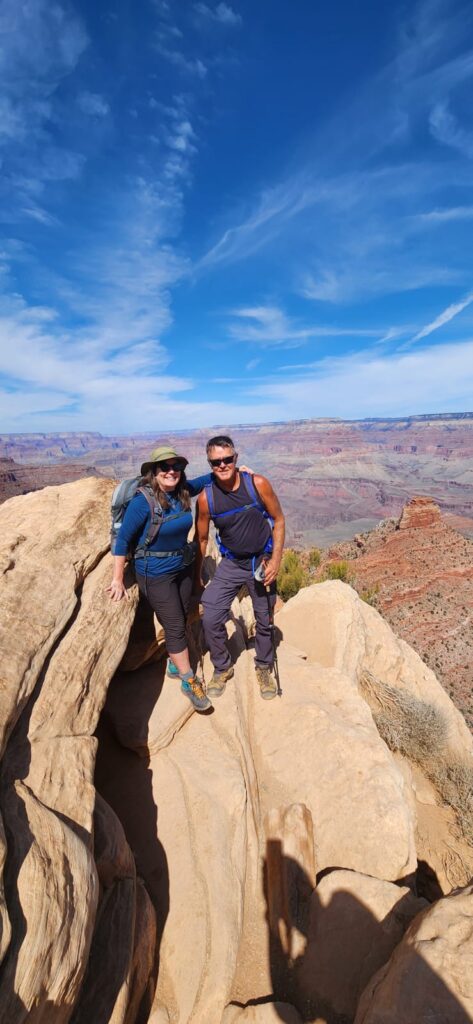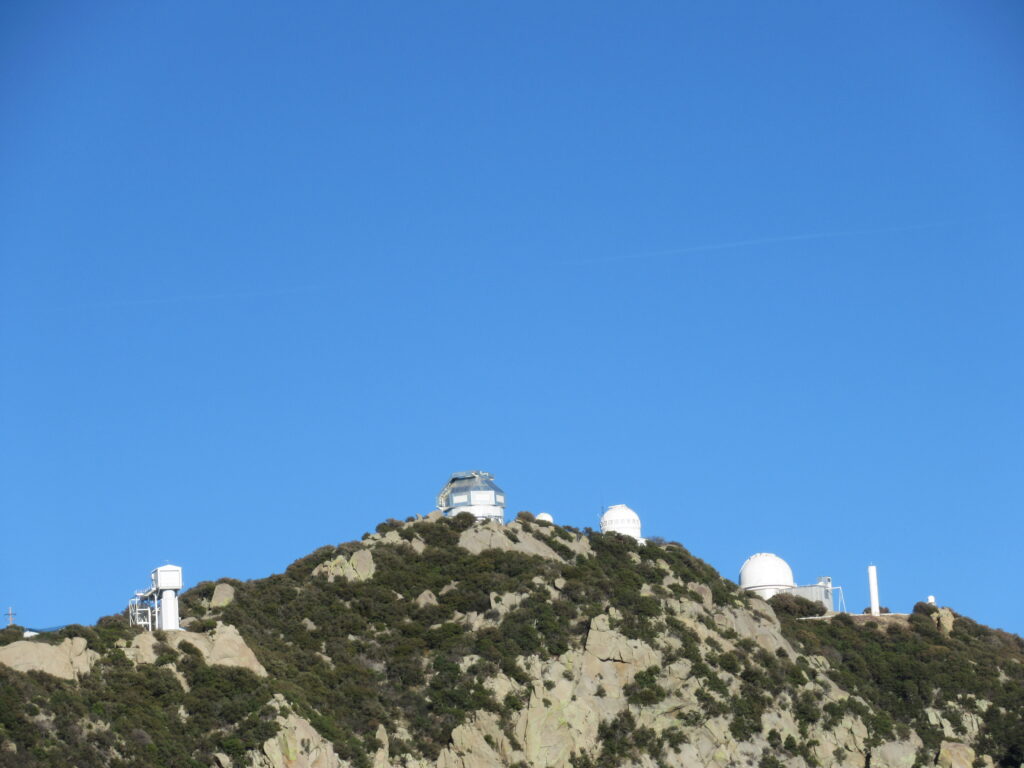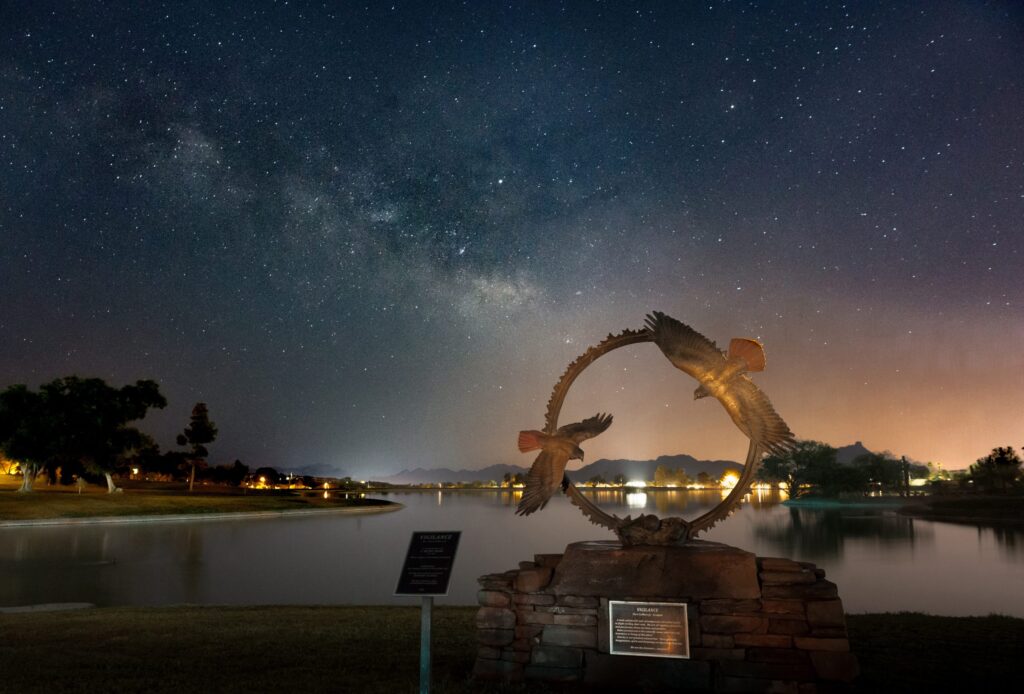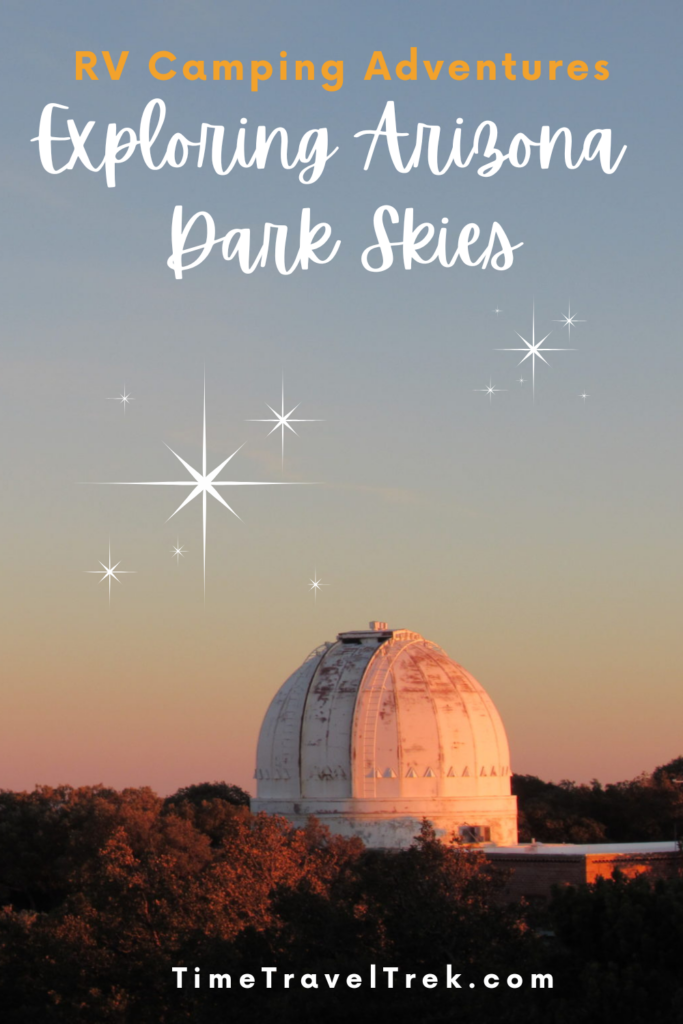What makes Arizona dark skies better than the rest? Where can you go to explore Arizona’s night skies and camp nearby? We’ve got a list of dark sky parks, observatories, planetariums, and more to help you get started on your star journey!
Disclosure: This post contains affiliate links. If you buy something from one of our affiliates, we receive a small commission at no extra charge to you. Thanks for helping to keep our blog up and running!
Table of Contents
Why Arizona dark skies?
Why is Arizona such a popular place for stargazing? Three reasons: 1) absence of light pollution, 2) good weather with many nights boasting clear skies, and 3) high elevation viewing points.
Arizona has 48 astronomical observatories with telescopes used for astronomy research. Many of these – from the Lowell Observatory in Flagstaff to the Kitt Peak National Observatory near Tucson – offer programs for the public. But you don’t necessarily need to be a professional astronomer or go on an observatory tour to take in Arizona’s majestic night skies.
The ‘Four Corners’ area in the U.S. – the meeting place of Arizona, Utah, Colorado, and New Mexico – also has the most International Dark-Sky Association (IDA) dark-sky communities in the world. Arizona itself has 19 dark-sky communities, places, and parks. You can also start simply with planetariums and space centers to begin night sky-watching journey.
Arizona’s dark sky parks
There are 13 IDA-certified, dark-sky parks in the state, where the “exceptional quality of starry nights and a nocturnal environment… is specifically protected for its scientific, natural, educational, cultural heritage, and/or public enjoyment.”

- Chiricahua National Monument near Willcox (camp at Bonita Canyon Campground in the monument)
- Flagstaff-area national monuments including 1) Walnut Canyon, 2) Wupatki, and 3) Sunset Crater Volcano (try camping at Homolovi State Park)
- Grand Canyon National Park (book early and stay in the park and check out the park’s night sky events)
- Grand Canyon-Parashant National Monument (closest access is St. George, Utah; Snow Canyon State Park is a great base camp for exploring this wilderness space).
- Kartchner Caverns State Park near Benson (camp in the park or in nearby Tombstone RV Park)
- Oracle State Park near Tucson (try camping at a Hipcamp nearby)
- Petrified Forest National Park near Holbrook (base camp at Homolovi, as mentioned above)
- Pipe Spring National Monument near Fredonia (the Kaibab Band of Paiute Indians operate a campground 1/4 mile north of the monument, but note that we have not stayed overnight here)
- Saguaro National Park in Tucson (check out Gilbert Ray Campground)
- Tonto National Monument (camp nearby at a USFS campsite on Roosevelt Lake)
- Tumacácori National Historical Park near Tubac (try camping at Patagonia Lake State Park)

Plan your Arizona dark sky adventures with our 2026 RV Trip Planner available in TimeTravelTrek’s Etsy Printables Shop.
A few of Arizona’s observatories open to the public
The renowned Lowell Observatory in Flagstaff invites amateur stargazers to look through some of the largest telescopes in the world. In November 2024, the Marley Foundation Astronomy Discovery Center officially opened. In addition to the Giovale Open Deck Observatory (opened in 2019), a general admission ticket also includes the brand-new rooftop Dark Sky Planetarium, historical tours and exhibits and more.
Camping option: It’s a longer drive, but you can avoid Flagstaff’s higher elevation chill by camping at Dead Horse Ranch State Park near Sedona.
Tucson area has three observatories open to visitors. We’ve visited both Kitt Peak National Observatory and Fred Lawrence Whipple Observatory (FLWO) on Mt. Hopkins in the past but you can complete the trifecta by adding Mt. Graham International Observatory near Safford – tours only run mid-May through October – to your list.

Note that the new FLWO Visitor & Science Center opened October 2024. Currently open on Fridays from 10 am – 4 pm with walking tours of the lower observatory at 12 noon and 2 pm.
Camping options: Around the Tucson area, we love staying at Gilbert Ray Campground in Tucson Mountain Park. In the Safford area, Roper Lake State Park is a perfect option.
Where to learn about Arizona’s dark skies on those rare, not-so-perfect nights?
Tucson is the headquarters of the Dark Skies Movement, so it’s a great place get started. The University of Arizona operates the Flandrau Science Center and Planetarium. Begin with the classic night sky show “Tucson Sky and Beyond” for a guided tour of the stars, planets, constellations and current events happening in the night sky.
Camping option: Book a site at Desert Trails RV Park.
If you’re feeling a little more adventurous, take a drive up to the Mt. Lemmon Skycenter for an introductory astronomy presentation, dinner, and a chance to view the night sky with binoculars and through the largest dedicated public telescopes in the Southwest.
Camping option: Book a space in Cactus Country RV Resort.
There are a couple of new and notable night skywatching places in and around the Phoenix area to keep an eye on. Check out the Arizona Science Center and the Dorrance Planetarium in Phoenix. Scheduled to reopen in March 2025, it will the most technologically advanced planetarium in North America.
Camping option: Usery Mountain Regional Park
Construction has begun on the International Dark Sky Discovery Center in Fountain Hills. Its Dark Sky Observatory will have the largest telescope in the Greater Phoenix area when it opens. Part of the mission of the Discovery Center is to help preserve dark skies. Fountain Hills – close to Phoenix but separated from the neon glow by the McDowell Mountains – joins Flagstaff and Sedona (among others) as a designated International Dark Sky Community.
Camping option: McDowell Mountain Regional Park

Where will you go to start exploring Arizona’s night skies?
So many Arizona dark sky adventures, so many place to camp nearby – and we didn’t even being to get into the more off-the-beaten path dark sky gems such as Kofa National Wildlife Refuge, Buenos Aires National Wildlife Refuge, or Gila Box Riparian National Conservation Area.
Many state parks offer star party nights with local astronomy groups (eg. Cattail Cove State Park has 4 star parties scheduled in 2025).
Where will you start exploring Arizona’s night skies? Let us know in the comments below!


Leave a Reply